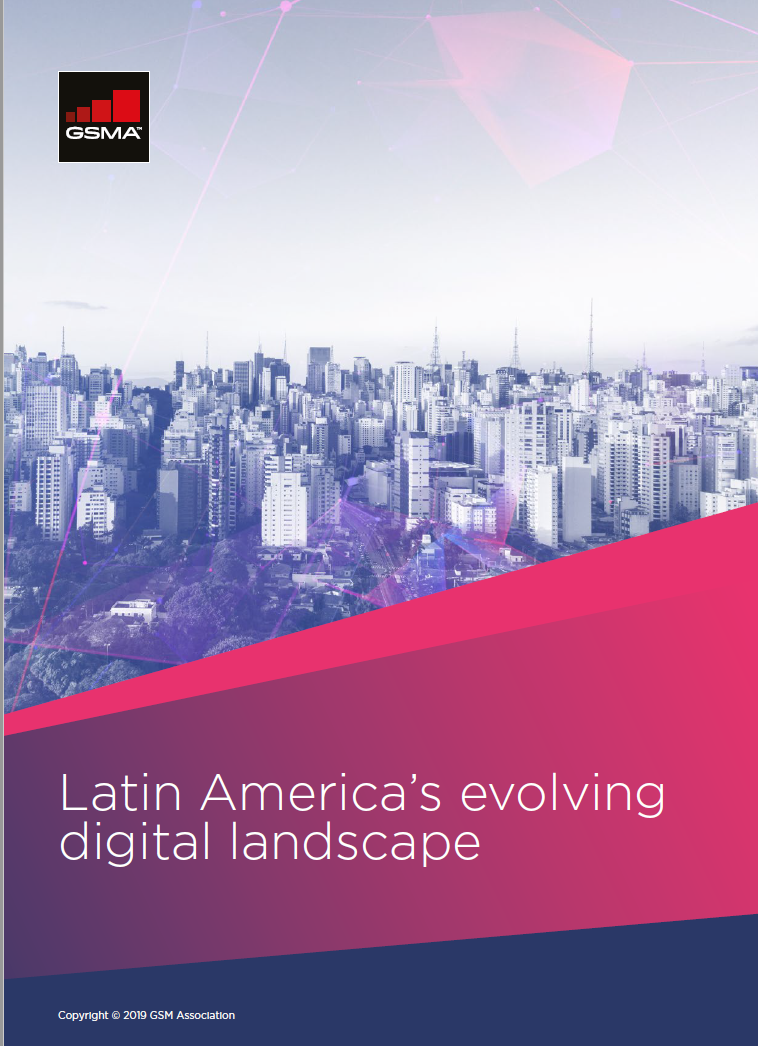Latin America’s evolving digital landscape

Please complete the form below or register for a free public account to access this report.
Report details
Latin America’s evolving digital landscape
The number of mobile subscribers in Latin America is set to reach 490 million by 2025, with three markets accounting for two thirds of new subscribers. Meanwhile, 5G trials are underway and consumption of OTT media over mobile continues to rise. Across Latin America, governments have the opportunity to decide how they will integrate their countries into the new digital knowledge economy and capture the benefits available.
This graphic-led, short report highlights key trends across different segments of the digital ecosystem in Latin America, including mobile adoption and technology evolution, IoT, media and entertainment, and smart home trends. It also highlights the key policy enablers for sustained investment and innovation in the Latin America mobile ecosystem.
Download the Report
Complete the form below to get instant access to this report. For easier access in the future, you can register for a free account here.
Report details
Latin America’s evolving digital landscape
Related research
Design matters: how interoperability models impact financial inclusion and competition
This report evaluates the impact of mobile money interoperability on adoption, usage and competition. With interoperability now present in more than 90 markets, the study moves beyond binary classifications to assess how different policy models – market-led, regulator-led and voluntary – affect outcomes.
Promoting DFS adoption among underserved market segments
This report explores how digital financial services (DFS) are reshaping access to finance in low- and middle-income countries, particularly for underserved individuals and nano, micro and small enterprises. Despite significant progress – driven by innovations such as mobile money – 1.4 billion people remain unbanked, with women, rural communities and less educated groups most affected.
The State of Mobile Internet Connectivity 2025: Affordability of Internet-Enabled Handsets and Data
The final report in this series explores how affordability of entry-level, internet-enabled handsets and various data bundles have changed over time, and how affordability impacts different segments of the population.
Authors
How to access this report
Annual subscription: Subscribe to our research modules for comprehensive access to more than 200 reports per year.
Enquire about subscriptionContact our research team
Get in touch with us to find out more about our research topics and analysis.
Contact our research teamMedia
To cite our research, please see our citation policy in our Terms of Use, or contact our Media team for more information.
Learn moreRelated research
Design matters: how interoperability models impact financial inclusion and competition
This report evaluates the impact of mobile money interoperability on adoption, usage and competition. With interoperability now present in more than 90 markets, the study moves beyond binary classifications to assess how different policy models – market-led, regulator-led and voluntary – affect outcomes.
Promoting DFS adoption among underserved market segments
This report explores how digital financial services (DFS) are reshaping access to finance in low- and middle-income countries, particularly for underserved individuals and nano, micro and small enterprises. Despite significant progress – driven by innovations such as mobile money – 1.4 billion people remain unbanked, with women, rural communities and less educated groups most affected.
The State of Mobile Internet Connectivity 2025: Affordability of Internet-Enabled Handsets and Data
The final report in this series explores how affordability of entry-level, internet-enabled handsets and various data bundles have changed over time, and how affordability impacts different segments of the population.
- 200 reports a year
- 50 million data points
- Over 350 metrics
